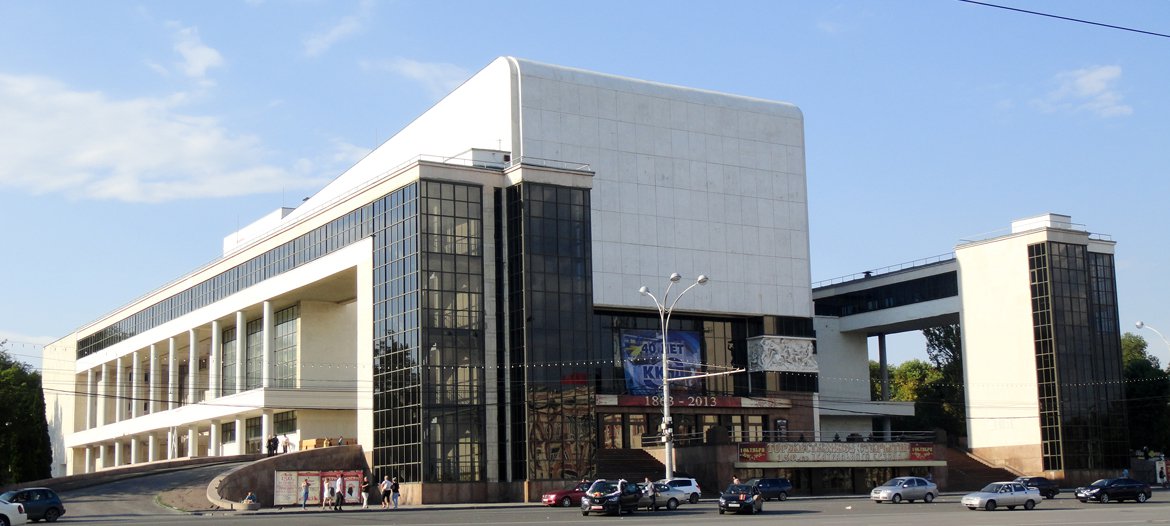
Is one of the largest theaters in Rostov-on-Don. Its building, which defines the appearance of the Theater Square, is known in the architectural world as a late monument of constructivism.
The date of foundation of the Gorky’s Drama Theater is usually considered June 23, 1863, when the first stationary troupe of the theater was established.
The construction of the theater building was conceived in 1929. A vacant lot was chosen between the newly merged cities of Rostov and Nakhichevan-on-Don. In 1930, the All-Union open competition was announced, for which 25 projects were presented, 6 of which received prizes. The first prize at the competition was awarded to the project "Red Poppy" by G. B. Barhin and M. G. Barkhin (with the participation of B. G. Barkhin). They also received a cash prize. However, after getting to know V. Shchuko and V. Gelfreich, who came later and did not take part in the general competition, it was decided to use it. The basis of the architectural forms of the building was the styling of a caterpillar tractor, most likely the first Soviet tractor Kommunar
The building was built in 1935 according to the project of academician of architecture VA Shchuko and professor VG Gelfreikh. All the equipment of the stage was designed by the engineer IV Exkuzovich. The construction was carried out by the collective of workers of "Teatrostroi" (the director was AM M. Stambler). After the completion of the construction, many experts called the theater one of the best in the country.
The exterior looks like a tractor. Originally it was lined with white Inkerman stone, and part of the facade with white marble, pilasters at the entrances to the theater were from polished labrador. Also, the main staircases were lined with natural marble, artificial lobbies - the lobby, foyer and the auditorium. The Great Hall was designed for 2,250 spectators and was intended for stage performances, while the small hall was intended for stage and concert performances. The building of the theater also included a library and a museum. The facade of the building is decorated with high reliefs by Sergei Korolkov. The main disadvantage of the building was poor acoustics.
Such large architects as Le Corbusier and Oscar Niemeyer called the theater a pearl of Soviet architecture. It is claimed that in the London Museum of the History of Architecture, Russia is represented by only two models: St. Basil's Cathedral and the Drama Theater. Maxim Gorky.
Rebuilt by 1963, the theater has become much smaller. The reconstruction project was executed by architects VM Anikin, VN Razumovsky, VV Deontief under the leadership of NN Semenenko and with the consultations of Professor VG Gelfreich. There was a complete redevelopment of the interior of the building. The capacity of the halls has significantly decreased, many sofa, pantry, kindergarten-creches have been eliminated, only one stage circle has remained. The main part of the marble cladding disappeared. At the same time, acoustics improved significantly. On the back of the building was built a stage site, which became known as the "Green Theater".
At present, there are three scenic stages in the theater building: the Great Hall for 1165 seats (the stage dimensions: width - 23 m, depth - 22 m, height - 22 m), Small hall for 300 seats and Experimental scene for 70 seats. In addition, there is an ART gallery in the western wing, where exhibitions of art are held, and the ART-cafe "Theater Square No. 1".

